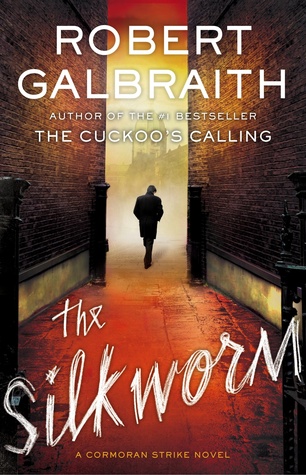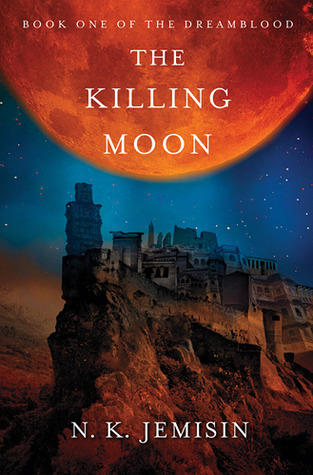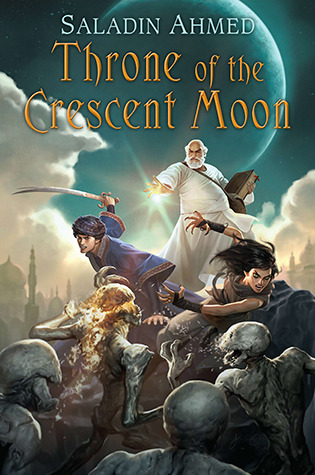- Cranberry juice
It all started with a bladder infection about ten years ago.
I went to my doctor's, who diagnosed the infection and prescribed a course of antibiotics. After making me promise I would finish all of the prescription, she sent me out the door, scrip in hand, and mentioned as I left that drinking lots of cranberry juice would help.
There were two types of cranberry juice in the drug store's groceries aisle. I checked the labels carefully while I waited for the pharmacist to prepare my prescription. One type of juice was full-sugar. The other was reduced-sugar and lower-calorie, and trumpeted that fact via lighter-coloured labelling and a big notice on the front of the jug. I recalled that the previous time I went to see my doctor, for my general check-up, she said I should work on losing weight. Feeling virtuous, I selected two jugs of the reduced-sugar variety and brought them to the pharmacy counter to pay for along with the prescription.
I had one glass of cranberry juice with each meal, using them to wash down the prescribed antibiotics. After a few days, my skin got itchy, then blossomed into red, bumpy hives. I was retaining so much water some of my shoes and clothing no longer fit. I had a constant ache right in the pit of my stomach, and, not to be too detailed about it, but I was constipated.
The doctor called me to make sure I was still taking the antibiotics and to remind me to keep taking them until they were used up.
"I am," I said, "but other symptoms are showing up."
"That's not right," she said, and transferred me to her receptionist to schedule me for another appointment.
At the appointment, I took off my shoes and socks to show the doctor my feet. The hives were packed so closely together they looked more like a rash than individual sores.
"There's more," I said, "on my lower back and arms, but this is the worst concentration."
She shook her head. "This is something else. Are you taking any other medication?"
I was not.
"Are you eating or drinking anything outside your normal diet?"
"Well, cranberry juice, like you said," I said. "But I made sure I got the low-sugar kind, because I remembered you told me to —"
"Is it sweetened with sucralose?" she said. She rolled her eyes when I didn't respond right away. "Splenda."
"It..." I tried to picture the jug's label. "Yes. It has the logo on the front."
"You're going to have to throw it away," she said. "You're allergic to it."
"Are you sure?" I know doctors hate it when patients say that, but it just popped out. Splenda was supposed to be the safe artificial sweetener. Its slogan was, "tastes like sugar, because it's made with sugar." It was okay to heat. It wasn't linked with cancer. It didn't turn into formaldehyde in your body.
"Oh yes," she said. "I see it often. Use the regular cranberry juice. Water it down a little if the sugar bothers you."
I've never had so much sucralose-sweetened stuff in a short period of time as that particular exposure, but it took several run-ins with the following to make me more vigilant:
- Diet soft drinks
- Foods advertised as being reduced-fat/reduced-calorie, even if the emphasis is on less fat (low-fat yogurt is especially likely to have sucralose in it by-the-way)
- Sugar-free gum
- Sugar-free frozen yogurt
All of the above have given me reactions, including (in fact, usually) when I forgot to read the ingredients list until the reaction had started. So no, it's not psychosomatic. None of the reactions were as bad as the one from the cranberry juice, but that's because I ceased use after symptoms first appeared.
- Doritos, Spicy Sweet Chili flavour*
I was having lunch with a friend when we noticed there was a new flavour of Doritos out. Neither of us felt like having a full bag with our lunches, so we bought one small bag to share.
Two chips were enough to give me two hives.
"What's in these things?" I said, and glanced at the back of the bag. Sure enough, there was sucralose listed.
And that's the thing about sucralose/Splenda. It's everywhere, including in food that is not even marketed as being diet/sugar-free.
* I just checked for a source for the ingredients list. I couldn't find a primary source, but for a secondary source I found, it looks like the sucralose has been since replaced with dextrose.
- Protein powder
- Tylenol and other over-the-counter medication, most often the "coated for ease of swallowing" varieties
- Mouthwash (most often noticed in the alcohol-free antibacterial varieties)
- Toothpaste
- Gripe water, various flavours
Unlike, say, peanut allergies, it seems that most people with sucralose allergies get uncomfortable but non-life-threatening reactions. My reaction is consistent with the other food and drug reactions I have: hives, water retention, gastric distress related to said water retention. If I'm dehydrated to begin with and I have a reaction, I can get a headache as well, although drinking lots of water usually takes care of that and lessens the reaction symptoms at the same time. There are many anecdotes of a reaction triggering a migraine — coming from a family of migraine sufferers (although, thank goodness, not one of them myself), I can see that, especially if stress is also a trigger. "OMG I accidentally ate sucralose!" could easily turn into "OMG I'm getting a migraine!" if stress triggers are an issue.
Some people seem to get the "opposite" reaction from mine, in that they get diarrhoea instead of water retention/constipation. I kind of envy them, because at least their body is making quick work of getting rid of the allergen. I can have lingering symptoms over a couple of days.
Lip balm
I had a sucralose reaction yesterday afternoon. On Sunday I'd bought a tube of lip balm from L'Occitane (a company that is one of my go-to places because they don't pack products with icky ingredients), just quickly glancing at the ingredients list to check it was glycerin-based, not petroleum-based (I like how the glycerin ones feel on my lips better).
Unfortunately, I didn't read the entire ingredients list. Monday morning, the balm felt... weird. By midafternoon the tip of my tongue felt strange, if not actually numb, so I double-checked the ingredients.
And there was sucralose, about third from the end of the list.
Oh well, I thought, I'm not swallowing the stuff. Most of it's coming off on my tea mug. I just won't wear it every day.
During my commute home, I started to feel those little points of irritated, itchy skin that means I'm in danger of forming hives. Then the pit of my stomach started to hurt. By the time I got home, I felt ill enough that tossing a brand-new $12 tube of lip balm in the trash was a no-brainer.
Allergens vs. toxicity
This time during my post-reaction research, I found a lot of sites, from snopes.com to sucralose.org, throwing shade on people who claim sucralose can cause adverse reactions. The Snopes message boards on the subject were especially illuminating on how proud sceptics can be dismissive of other people's stories.
A few things about that:
- There is a difference between an allergen and a toxin. Sweet almonds are good food, unless you're allergic to them, in which case they can be deadly. Bitter almonds are poisonous to everyone. So telling me my allergy isn't real because sucralose "isn't toxic" doesn't actually follow. I can't find any credible source saying it's toxic, but that doesn't mean I can eat it. I can eat peanut butter sandwiches as often as I like, but just one bite is enough to kill my peanut-allergic friends.
- Sucralose.org, among others, claims that no-one, ever, since its invention, has been allergic to sucralose. I know two other people besides me. All of us have had the allergy confirmed by doctors. My doctor, I hope I made clear from the top of this post, has absolutely no tolerance for non-scientific or otherwise uninformed opinions, yet she was very familiar with people having reactions to sucralose. And yet when I search for things like "how common are sucralose allergies", I can't find anything about the rate at which the general population is affected.
- While I agree with the old saw about the plural of anecdote not being data, it seems to me that there are a lot of anecdotes... but not a lot of data refuting them. The ones that do tend to conflate allergens with toxins, or spend more time attacking those who claim to have reactions than showing no-one's having reactions. Maybe I'm just searching using the wrong terms, but it doesn't seem like people are scrutinising sucralose/Splenda the way they did, say, aspartame.
I am most emphatically not advocating for sucralose to be removed from products. What I would like to see, however, are some changes to labelling, and to attitudes:
- It only takes a tiny amount of sucralose to sweeten something. Consequently, it tends to get buried in ingredients lists, down at the end with the preservatives, emulsifiers, and other difficult-to-pronounce chemical terms. I know from personal experience that even if you're specifically looking for it, it's easy to miss. I would love to have it listed with the other common allergens like soy and eggs. If it doesn't merit the designation "common allergen" (and how many people are allergic, exactly? why does there seem to be no-one studying this?), at least note it separately, the way "contains aspartame" is.
- Formulators of cosmetics, oral hygiene products, nutritional supplements, drugs: does your product really need sucralose in it? Is any consumer really going to miss it if it's not there, or think your product is inferior because of sucralose's absence? The lip balm I just tossed is a great example of a product probably not needing sucralose. It already has a glycerin base, which already makes it taste sweet. Or consider protein powders, which will never be consumed on their own anyhow. Leave off the artificial sweetener. Customers will flavour their protein shakes as they see fit.
The worst thing for me as someone allergic to this stuff, besides the ubiquity requiring a "constant vigilance" attitude to ingredients, is that sucralose hasn't been on the market that long. I can remember when it didn't exist at all.
Which just makes its ubiquity, and the laissez-faire attitude of both the manufacturing companies and the watchdog groups who are supposed to regulate them, all the more infuriating.
Now if you'll excuse me, I have to force myself to drink some more water to try and rinse this stuff out of me.
























